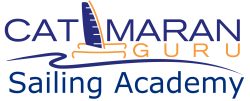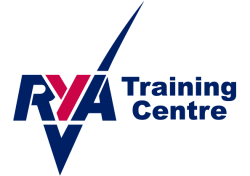Advanced Coastal Cruising (ASA 106)
Prerequisites: Basic Keelboat Sailing, Basic Coastal Cruising, Bareboat Chartering and Coastal Navigation Certification.
General Description: A certified student is able to safely act as skipper and crew of a sailing vessel about 30 to 50 feet in length in coastal and inland waters, in any conditions, day or night.
Sailing Knowledge
- Describe the theory of true and apparent wind and the theory of sailing using force diagrams.
- Describe with the aid of diagrams the causes of lee and weather helm and methods of correcting them.
- Describe sail shapes and sail interactions as needed for different wind strengths and points of sail. Describe the effects of sail trimming on sail shape and sail interactions.
- Describe the proper selection of sails on a given boat for all weather conditions.
- Identify how to use a barometer and a thermometer in predicting weather.
- Describe cirrus, cirrostratus, altocumulus, stratocumulus, cumulonimbus, and cumulus clouds and the weather expected to be associated with each.
- Describe local weather in relation to thermal winds and prevailing winds.
- Describe three sources of weather information available to yachtsmen in the U.S.
- Describe the appropriate heavy weather precautions for the boat selected and describe how they are carried out, including all the steps to be taken by skipper and crew for “heaving to” and”lying a hull.”
- Describe the methods of rafting at anchor during day and night and the possible problems.
- Describe step by step how to secure a boat overnight with one anchor and stern made fast to the shore or dock.
- Describe various anchoring techniques including two methods of setting two anchors, retrieving fouled anchor, use of a tripline, anchor buoy and maintaining anchor watch.
- Describe how to prevent the tender/dinghy from riding up and bumping the vessel’s hull while anchored at night.
- Describe proper towing techniques and hazards associated with towing.
- List from memory the visual distress signals listed in the applicable U.S. Coast Guard publications.
- Describe what actions should be taken during various emergencies while under sail or under power.
- State the fuel range of the selected boat and the factors that could affect vessel’s range.
- State the water capacity on selected boat and the minimum water requirement per person on any boat.
- Describe and demonstrate the appropriate corrective measures for common engine problems as applicable to the boat selected.
- Describe the minimum preseason maintenance and checks given to the various boat systems.
- Describe recommended permanent and temporary installation methods of grounding for lightning and safety measures to prevent accidents due to lightning.
- State the danger of overhead power lines.
- Describe the uses, capabilities and limitations of a permanently mounted and a portable radar reflector.
- Describe the skipper’s responsibilities and actions for common courtesies and customs of yachtsmen.
- List the documents required and the procedures followed when leaving and entering U.S. territorial waters and foreign countries.
Sailing Skills
- Act as helmsman and demonstrate the proper techniques in all points of sail with varying wind force.
- Work to weather to best advantage using windshifts, tides, and local geography.
- Sail a compass course (within 10 degrees) with sails trimmed.
- Demonstrate correct methods of launching and towing a dinghy.
- Demonstrate correct methods of launching, securing and stowing of dinghy outboard motor.
- Properly carry out nighttime person overboard procedures.
- Demonstrate correct procedures for spinnaker sailing(optional). The certifying instructor will indicate spinnaker use in the certification box on the appropriate page.
- Set anchor, weigh anchor, pick up, cast off moorings and dock the boat under various conditions.
- Demonstrate how to take a sounding using two different methods.
- Stand a navigation watch during a passage of about 20 miles by night and 20 miles by day and demonstrate all of the skills required for all lower ASA certification levels.
- Act as skipper and crew on a live-aboard cruise of at least 48 hours (30 hours minimum instructional program).
Sail With Us to Learn


Week-Long Liveaboard Courses
Rare RYA Classes & Certifications
Catamaran Guru’s real-life practical methods combined with up-to-date sailing theory in lessons aboard recent model catamarans…or your own boat!
Prepare for certifications or take the first step aboard to embark on your dream life of boat ownership or cruising
Classes in S Florida and the Bahamas.

Estelle Cockcroft
Catamaran Guru Co-Founder
Estelle Cockcroft is a seasoned sailor, catamaran expert, and co-founder of Catamaran Guru. With over 70,000 NM sailed and 30+ years aboard, she empowers new cruisers with expert advice on liveaboard life, yacht ownership, and ocean adventures.




